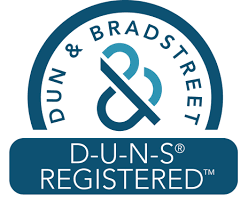There are three general categories of plastic injection mold tools that product designers can consider when making finished parts. They each have advantages, largely depending on the intended volumes. Let’s take a closer look at which type might be best for your project. A single cavity plastic injection mold tool is the most basic form of tooling, and the most common. With this type of tooling, one production cycle makes one finished part.
Multi cavity tools have at least two cavities and two cores, with a practical limit of potentially hundreds of small cores and cavities. All of the shapes are the same, and they’re made in balanced, even-numbered pairs. Because there are so many cavities, one production cycle can make dozens or even hundreds of finished parts, depending on the capacity of the molding machine.
Family tools also have multiple cavities and cores, but in this case they’re different sizes and shapes. We do this when we want to make all of the necessary components of a finished assembly in one single production cycle.

Single Cavity Tools
There are many good reasons for using a single cavity plastic injection molding tool.
Positives of Using Single Cavity Tools
- Fastest to manufacture
- Least expensive tooling option for basic shapes
- Easy to control the processing parameters, so the molding conditions tend to be more stable and predictable
- Most suitable for lower volumes of finished parts
Drawbacks of Using Single Cavity Tools
Product developers need to weigh these potential advantages against a few drawbacks.
- Slowest production times
- Highest cost per finished piece
Multi Cavity Tools
Multiple cavity tooling is an excellent solution for the right project. Here are some of the advantages.
Positives of Using Multi Cavity Tools
- More parts per cycle, so suitable for larger orders
- Lower cost per piece that a single cavity tool
- Better color consistency between parts
There are, as always, some compromises that product developers should be aware of when planning your projects.
Drawbacks of Using Multi Cavity Tools
- It takes considerably longer to design and make multi cavity tools, and they’re more expensive
- MoldFlow analysis must be performed to predict, and control, the additional stresses and limitations that the resin encounters inside the tool.
- They use more complex gate and runner systems, as well as cooling channels.
- It may require that the part be reoriented inside the tool to allow for different gate locations. That, in turn, will affect ejector pin marks, gate witnesses, and other minor blemishes on the finished part.

Family Tools
Learn the positives and drawbacks of using family tools.
Positives of Using Family Tools
There is a single compelling reason why a product designer might choose to invest in a family tool. This is done when it’s important for all of the components of a single assembly to have an exact color match. Many household appliances use this method so that the finished product is very uniform in appearance.
Drawbacks of Using Family Tools
A family tool contains a number of cores / cavities of differing shapes and sizes. Because of this, the toolmaker must take extra care to design a tool that balances out the various pressures inside the tool, while also designing a more sophisticated gate and runner system to fill all of the tool uniformly.
For this reason, family tools tend to be more expensive, take longer to prepare, and may require the additional use of hot-tip runners to manage the thermal stresses inside such a tool.
Cycle Times and Single or Multi Cavity Tools
Production cycle time is a critical variable that developers need to be able to predict and control. The cycle time directly impacts the volume of parts that can be made – and therefore shipped – within a given time frame, as well as affecting the cost per part.
When order volumes go up, it’s advantageous to decrease cycle times to their minimum. This is less of a problem with smaller orders.
But in order to achieve the fastest possible cycle times, it may be necessary to make an initial investment in higher quality tool steels, multiple cavity tools, and tool surface coatings that extend tool life while improving tool performance.
Again, this additional expense is only warranted if the intended volume is high enough to recoup the cost over time.
If you liked reading this article, we recommend the following content:
Tagged:







